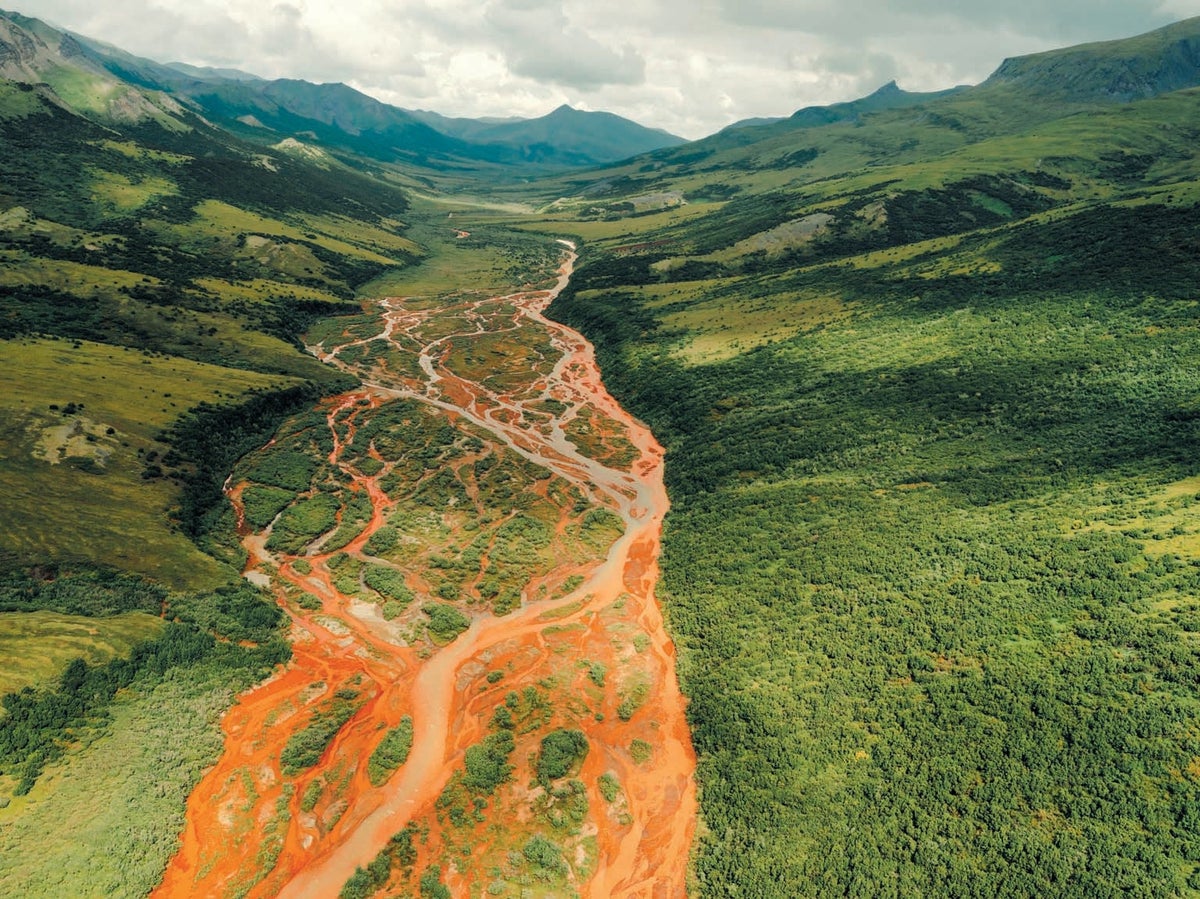Researchers have long been puzzled by the mysterious orange hue overtaking rivers and streams across Alaska.
Permafrost Turns River Orange
Recent studies point to climate change as the culprit, with thawing permafrost releasing minerals into the once-clear waters. This phenomenon poses a significant threat to drinking water and fisheries in the region.

According to a study published in Nature Earth and Environment, the discoloration is caused by minerals from the thawing permafrost entering the water systems. “Those orange streams can be problematic both in terms of being toxic but might also prevent migration of fish to spawning areas,” explained Jon O’Donnell, an ecologist with the National Park Service Arctic Inventory and Monitoring Network, in a press release.
Impacted Areas and Discovery
The affected waters are primarily located within federal lands, including the Gates of the Arctic and Kobuk Valley national parks. Researchers sampled water from 75 locations across a Texas-sized area in northern Alaska’s Brooks Range. Some areas are so remote that helicopters are necessary for access. The stained waters are so extensive that they can even be seen from space, according to Brett Poulin, an assistant professor of environmental toxicology at UC Davis and a study researcher. O’Donnell first noticed the discoloration in 2018, but satellite images have documented stained waters as far back as 2008. “The issue is slowly propagating from small headwaters into bigger rivers over time,” O’Donnell noted. One notable example is the Salmon River, which turned from pristine clear water to orange-green in the summer of 2019, with the discoloration persisting and staining riverbanks.
Composition and Concerns
Scientists believe that minerals stored in permafrost when exposed to warm temperatures, release acid and metals into the water. Samples from the orange rivers showed high levels of iron, zinc, nickel, copper, and cadmium. Iron, the most dominant metal, is believed to cause the orange coloration. Some water samples had a pH of 2.3, significantly more acidic than the average river pH of 8.
The presence of these metals poses serious concerns. The study noted a dramatic decline in macroinvertebrate diversity and fish abundance in discolored streams. Alaska’s Arctic rivers are home to various fish species vital for subsistence, sport, and commercial fisheries. The contamination could threaten these fish populations and, consequently, the livelihoods of those who depend on them. Additionally, the metals in the water could impact rural drinking supplies, potentially affecting water taste and necessitating enhanced filtration systems for affected communities.

Future Research and Recovery
Researchers are still trying to fully understand the implications of the orange waters and the potential risks to fishing stocks and drinking water. They aim to study whether rivers and streams can recover if cold weather conditions promote permafrost refreezing. This ongoing research is crucial for developing strategies to mitigate the impacts of climate change on Alaska’s vital water resources.
